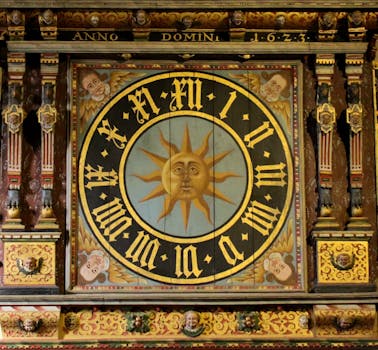“Uncover the Hidden Costs of Solar Inverters: What You Need to Know Before You Invest!”
When considering the installation of solar energy systems, many homeowners focus primarily on the initial costs of solar panels and inverters. However, hidden costs associated with solar inverters can significantly impact the overall investment. These costs may include maintenance fees, replacement expenses, installation complexities, and potential upgrades needed for compatibility with existing systems. Understanding these hidden costs is crucial for making informed decisions and ensuring that the long-term benefits of solar energy are maximized. This guide will highlight key factors to watch out for when evaluating solar inverters, helping consumers navigate the financial landscape of solar energy investments.
Installation Fees: Understanding Additional Charges
When considering the transition to solar energy, many homeowners focus primarily on the cost of solar panels, often overlooking the associated expenses that can significantly impact the overall investment. One of the most critical components of a solar energy system is the inverter, which converts the direct current (DC) generated by solar panels into alternating current (AC) for use in homes. While the price of solar inverters is often highlighted, installation fees and additional charges can add a layer of complexity to the financial equation. Understanding these costs is essential for anyone looking to make an informed decision about solar energy.
Installation fees can vary widely based on several factors, including the complexity of the installation, the type of inverter chosen, and the specific requirements of the home. For instance, a straightforward installation on a single-story home may incur lower costs compared to a multi-story residence with a more complicated roof structure. Additionally, if the installation requires modifications to the existing electrical system or structural reinforcements, these factors can lead to increased labor and material costs. Therefore, it is crucial to obtain detailed quotes from multiple installers to gain a comprehensive understanding of the potential installation fees.
Moreover, the type of inverter selected can also influence installation costs. There are several types of inverters available, including string inverters, microinverters, and power optimizers, each with its own installation requirements. For example, microinverters, which are installed on each individual solar panel, may require more labor and time to install compared to traditional string inverters. Consequently, while microinverters may offer advantages in terms of efficiency and performance, they can also lead to higher installation fees. Homeowners should weigh these factors carefully when selecting the type of inverter that best suits their needs.
In addition to the basic installation fees, there are often hidden costs that can catch homeowners off guard. For instance, some installers may charge for permits, inspections, or other regulatory requirements that are necessary for a compliant installation. These fees can vary by location and may not be included in the initial quote, leading to unexpected expenses down the line. It is advisable to ask potential installers about all possible fees upfront to avoid surprises later in the process.
Furthermore, maintenance and warranty considerations should not be overlooked when evaluating the total cost of solar inverters. While many inverters come with warranties that cover defects and performance issues, they may not include coverage for installation-related problems. If an inverter fails and requires replacement, homeowners may find themselves responsible for both the cost of the new inverter and the installation fees associated with its replacement. Therefore, it is prudent to inquire about the warranty terms and any potential costs that may arise during the lifespan of the inverter.
In conclusion, while solar energy presents an opportunity for significant savings on electricity bills, it is essential to consider the hidden costs associated with solar inverters, particularly installation fees. By understanding the various factors that influence these costs, including the type of inverter, the complexity of the installation, and potential hidden charges, homeowners can make more informed decisions. Ultimately, thorough research and clear communication with installers can help mitigate unexpected expenses, ensuring that the transition to solar energy is both financially sound and beneficial in the long run.
Maintenance and Repair Costs: Budgeting for Longevity
When considering the installation of solar panels, many homeowners focus primarily on the initial costs and potential savings on energy bills. However, one crucial aspect that often gets overlooked is the maintenance and repair costs associated with solar inverters. These devices play a vital role in converting the direct current (DC) generated by solar panels into alternating current (AC) that can be used in homes. Understanding the hidden costs related to the upkeep of solar inverters is essential for budgeting effectively and ensuring the longevity of your solar energy system.
To begin with, it is important to recognize that solar inverters are not designed to last indefinitely. Most inverters have a lifespan of about 5 to 15 years, depending on the type and brand. This means that, over the life of your solar panel system, you may need to replace the inverter at least once. The cost of a new inverter can range from $1,000 to $3,000, depending on the specifications and installation requirements. Therefore, when budgeting for your solar energy system, it is prudent to factor in this potential expense, as it can significantly impact your overall return on investment.
In addition to replacement costs, regular maintenance is another aspect that should not be overlooked. While solar inverters generally require minimal maintenance, they do need periodic checks to ensure they are functioning optimally. This may involve cleaning the inverter, checking for any signs of wear or damage, and ensuring that all connections are secure. Hiring a professional for these maintenance tasks can incur additional costs, typically ranging from $100 to $300 per visit. By scheduling regular maintenance, you can help prevent more significant issues down the line, which could lead to costly repairs or even premature replacement.
Moreover, it is essential to consider the potential for unexpected repairs. Like any electronic device, solar inverters can experience malfunctions due to various factors, including power surges, environmental conditions, or manufacturing defects. Repair costs can vary widely, depending on the nature of the issue and whether the inverter is still under warranty. If the inverter is out of warranty, repair costs can quickly add up, sometimes reaching several hundred dollars. Therefore, it is wise to review the warranty terms when purchasing an inverter, as some manufacturers offer extended warranties that can provide peace of mind and financial protection against unexpected failures.
Furthermore, the location of your solar inverter can also influence maintenance and repair costs. Inverters installed in harsh environments, such as extreme heat or humidity, may require more frequent servicing and could have a shorter lifespan. Therefore, when planning your solar installation, consider placing the inverter in a sheltered location to mitigate potential damage and reduce maintenance needs.
In conclusion, while solar energy systems can offer significant savings on energy bills, it is crucial to account for the hidden costs associated with solar inverters. By budgeting for potential replacement, regular maintenance, and unexpected repairs, homeowners can ensure that their solar energy systems remain efficient and cost-effective over the long term. Ultimately, a proactive approach to managing these costs will not only enhance the longevity of your solar inverter but also maximize the overall benefits of your solar investment.
Warranty Limitations: What’s Not Covered
When considering the installation of solar energy systems, many homeowners focus primarily on the initial costs and potential savings on their energy bills. However, one critical aspect that often goes overlooked is the warranty limitations associated with solar inverters. While warranties can provide a sense of security, understanding what is not covered is essential to avoid unexpected expenses down the line.
Typically, solar inverters come with warranties that range from five to twelve years, depending on the manufacturer. While this may seem adequate, it is crucial to delve deeper into the specifics of these warranties. For instance, many warranties cover only the inverter itself and do not extend to associated components, such as wiring, mounting systems, or even the labor costs involved in replacing a faulty inverter. This limitation can lead to significant out-of-pocket expenses if any of these components fail, as homeowners may find themselves responsible for repairs that are not included in the warranty.
Moreover, it is important to note that warranties often have specific conditions that must be met for coverage to remain valid. For example, some manufacturers may require that the inverter be installed by a certified technician or that it be maintained according to their guidelines. Failure to adhere to these stipulations can void the warranty, leaving homeowners vulnerable to the full cost of repairs or replacements. Therefore, it is advisable to thoroughly read the warranty documentation and ensure compliance with all requirements to avoid any pitfalls.
Another aspect to consider is the duration of coverage for different components of the inverter system. While the inverter itself may be covered for a longer period, other parts, such as the communication devices or software, may have much shorter warranty periods. This discrepancy can lead to confusion and potential financial strain if these components fail after their respective warranties expire. Homeowners should inquire about the warranty terms for all parts of the system to gain a comprehensive understanding of their coverage.
Additionally, some warranties may include clauses that limit the manufacturer’s liability in certain situations. For instance, if damage occurs due to natural disasters, power surges, or improper installation, the warranty may not cover the costs associated with repairs. This limitation can be particularly concerning in areas prone to extreme weather or electrical issues. Homeowners should consider purchasing additional insurance or protection plans to mitigate these risks, as relying solely on the manufacturer’s warranty may not provide adequate coverage.
Furthermore, it is essential to recognize that the longevity and reliability of solar inverters can vary significantly between manufacturers. While some brands may offer robust warranties, others may have a history of frequent failures or poor customer service. Researching the reputation of different manufacturers and reading customer reviews can provide valuable insights into the reliability of their products and the responsiveness of their warranty services.
In conclusion, while solar inverters can be a wise investment for energy savings, understanding the limitations of their warranties is crucial. Homeowners should be aware of what is not covered, including associated components, specific conditions for coverage, and potential exclusions. By taking the time to thoroughly investigate warranty terms and manufacturer reputations, homeowners can make informed decisions that protect their investments and ensure a smoother transition to solar energy. Ultimately, being proactive about warranty limitations can save homeowners from unexpected costs and enhance their overall solar experience.
Efficiency Losses: The Impact on Long-Term Savings
When considering the installation of solar panels, many homeowners focus primarily on the initial costs and potential savings on their energy bills. However, one critical aspect that often goes overlooked is the efficiency of solar inverters, which can significantly impact long-term savings. Solar inverters play a crucial role in converting the direct current (DC) generated by solar panels into alternating current (AC) that can be used in homes. While the upfront cost of solar inverters may seem reasonable, inefficiencies in their operation can lead to hidden costs that accumulate over time, ultimately affecting the overall return on investment.
To begin with, it is essential to understand that not all solar inverters are created equal. Different models and brands exhibit varying levels of efficiency, which can directly influence the amount of energy converted and utilized. For instance, a high-efficiency inverter may convert up to 98% of the energy produced by solar panels, while a lower-efficiency model might only achieve 90%. This seemingly small difference can translate into significant energy losses over the lifespan of the system. As a result, homeowners may find themselves generating less usable energy than anticipated, leading to higher electricity bills and diminished savings.
Moreover, the efficiency of solar inverters can degrade over time. Factors such as temperature fluctuations, dust accumulation, and general wear and tear can contribute to a decline in performance. As inverters age, their ability to convert energy efficiently diminishes, which can further exacerbate the issue of efficiency losses. Homeowners should be aware that this degradation can lead to unexpected costs, as they may need to replace or repair their inverters sooner than anticipated. Therefore, it is crucial to consider the long-term performance and reliability of the inverter when making a purchasing decision.
In addition to efficiency losses, the type of inverter selected can also impact overall system performance. For example, string inverters, which are commonly used in residential solar systems, can experience significant energy losses if one panel is shaded or underperforming. This phenomenon, known as the “shading effect,” can lead to a decrease in the overall output of the entire system. On the other hand, microinverters or power optimizers can mitigate this issue by allowing each panel to operate independently, thus maximizing energy production even in less-than-ideal conditions. While these advanced options may come with a higher upfront cost, they can ultimately lead to greater long-term savings by enhancing overall system efficiency.
Furthermore, it is essential to consider the warranty and support offered by inverter manufacturers. A robust warranty can provide peace of mind, ensuring that any potential issues with efficiency or performance are addressed without incurring additional costs. Homeowners should also research the reputation of the manufacturer and the availability of customer support, as these factors can influence the longevity and reliability of the inverter.
In conclusion, while solar energy systems can offer substantial savings over time, it is vital to recognize the hidden costs associated with solar inverters. Efficiency losses can significantly impact long-term savings, making it essential for homeowners to carefully evaluate their options. By selecting high-quality inverters, considering advanced technologies, and understanding the importance of warranties and support, homeowners can maximize their investment in solar energy and enjoy the full benefits of renewable energy for years to come.
Q&A
1. **What are hidden installation costs associated with solar inverters?**
Hidden installation costs can include additional labor fees, structural modifications, or the need for upgraded electrical systems to accommodate the inverter.
2. **Are there ongoing maintenance costs for solar inverters?**
Yes, ongoing maintenance costs may include periodic inspections, cleaning, and potential repairs or replacements of components, which can add to the overall expense.
3. **What warranty limitations should be considered?**
Warranties may have exclusions or limitations that could lead to unexpected costs, such as coverage only for specific parts or conditions that are not met.
4. **How can inverter efficiency impact overall costs?**
Inverter efficiency affects energy production; lower efficiency can lead to reduced energy savings, resulting in higher long-term costs despite lower initial purchase prices.
Conclusion
When considering solar inverters, it’s crucial to be aware of hidden costs that can impact the overall investment. These may include installation fees, maintenance expenses, warranty limitations, and potential costs for system upgrades or replacements. Additionally, factors such as energy efficiency ratings and compatibility with existing solar systems can influence long-term savings. To ensure a sound financial decision, thorough research and a clear understanding of all associated costs are essential before purchasing a solar inverter.




